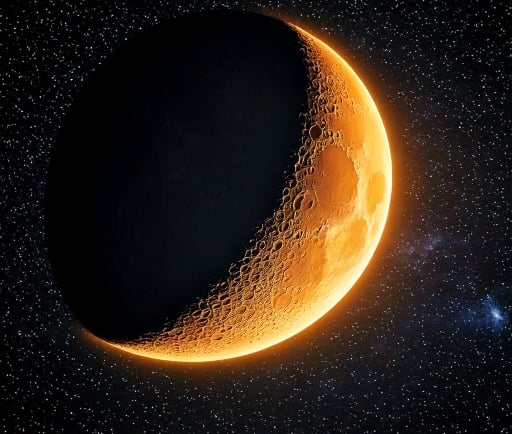The Crescent Phase of Venus: A Celestial Phenomenon


Understanding Venus and Its Crescent Phase
Venus, the second planet from the Sun, has captivated astronomers and stargazers alike with its brilliance and unique characteristics. Among these is its intriguing crescent phase. Much like the Moon, Venus undergoes various phases based on its position relative to Earth and the Sun. When Venus is positioned closer to Earth and between our planet and the Sun, it appears as a thin crescent, creating a stunning visual spectacle in our night sky.
The Science Behind Venus' Phases
The genesis of the crescent phase of Venus can be attributed to the relative alignments of the three celestial bodies: Venus, Earth, and the Sun. When Venus transitions into its crescent phase, it is typically near inferior conjunction, a position where it is situated between the Sun and the Earth. This alignment casts a shadow on the planet, revealing only a sliver of its illuminated surface, which is the hallmark of its crescent appearance.
Comparative Analysis: Venus and the Moon
The resemblance between Venus' crescent phase and that of the Moon is striking. Both celestial bodies exhibit phases that are influenced by their orbits around their respective central bodies. The Moon, orbiting the Earth, goes through its phases in a predictable cycle, influenced by its position relative to both Earth and the Sun. Similarly, Venus' crescent appearances are not only beautiful but also serve as a reminder of the dynamic interactions within our solar system.
This analogy is not just superficial; it tantalizes astronomers with insights about planetary brightness, surface features, and atmospheric composition. The crescent phase gives a unique opportunity to study Venus's atmosphere as it lets observers analyze its illuminated and shadowed sides. Such observations have significant implications for planetary science, enhancing our understanding of both Venus and other celestial processes.
Moreover, beyond the scientific examination, the visual grandeur of Venus in its crescent phase has inspired poets, artists, and dreamers throughout history. Witnessing Venus bathed in pale light, with its slender crescent shape gracing the horizon, ignites a sense of wonder and curiosity about our universe.
In conclusion, the crescent phase of Venus is more than just a beautiful sight; it serves as a gateway to explore the intricate dynamics of our solar system. As we continue to study this fascinating planet, each crescent appearance reminds us of the ever-changing nature of celestial bodies and their phases. Whether you are an amateur astronomer or simply enjoy stargazing, take the time to observe this remarkable phenomenon the next time Venus graces the night sky.
